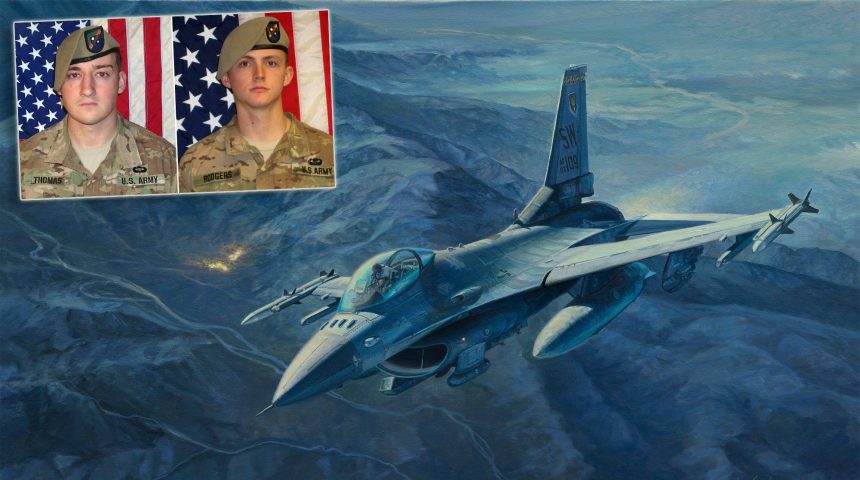Tragedy, Valor and Heroism.
“The first casualty of war is innocence. I assure you, war is ugly.”
–Paraphrased from Legacy by SL Buckley.
“…the righteous are bold as a lion” Proverbs 28: 1-28.
Fifty Army Rangers were completely surrounded in the dark valley hamlet, taking heavy enemy fire from all sides. The April 26/27, 2017 Mohmand Valley Raid in Afghanistan’s Nangarhar Province instantly descended into chaos. From chaos, it collapsed to tragedy. And from tragedy, redemption.
When the raid was over, Sgt. Josh Rodgers, 22, of Bloomington, Illinois and Sgt. Cameron Thomas, 23, of Kettering, Ohio, both from the Army’s elite 3rd Battalion, 75th Ranger Regiment at Ft. Benning, Georgia, were dead.
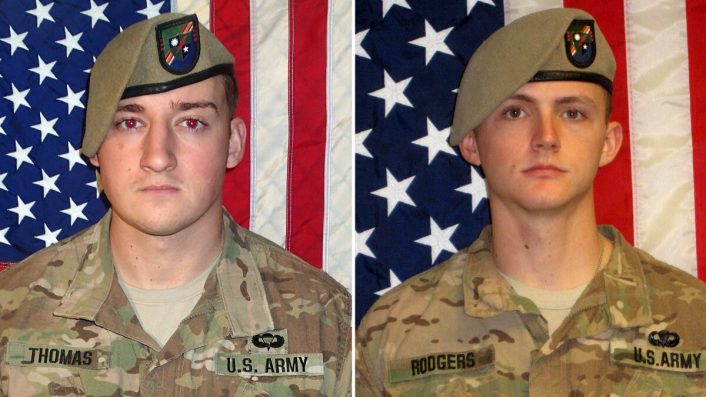
Then it got worse. Concerns of a chaotic death for Sgt. Rodgers and Sgt. Thomas by “fratricide”, or friendly fire, began to emerge. Those concerns were later confirmed. But in confirmation of a chaotic and tragic death, a grieving family’s grace elevated the tragic losses to become a true-life legend of heroism and selfless sacrifice.
And in the final act of this nearly mythical tragedy, two guardian angels emerged and slayed an evil despot wanted for the heinous 2017 terrorist attack on doctors and nurses in a downtown hospital that killed 49 and wounded 63.
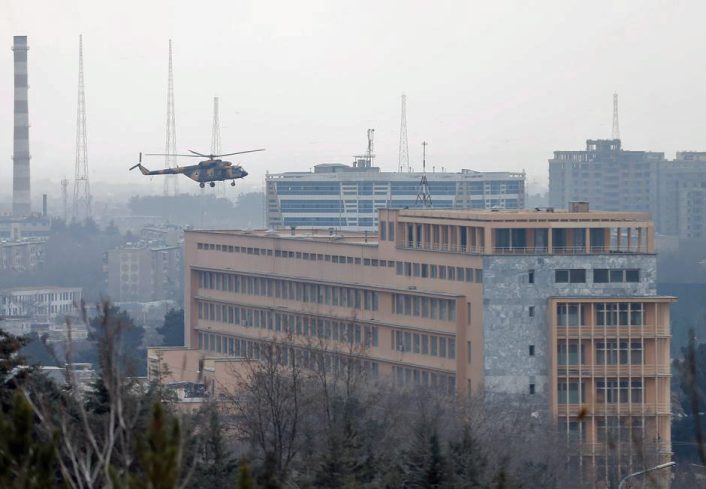
The target in the April 26, 2017 raid, Abdul Hasib, was truly evil. Only weeks earlier, on March 8, 2017, he masterminded a daylight suicide attack by terrorists dressed as doctors on the most modern hospital in Afghanistan, Sardar Mohammad Daoud Khan National Military Hospital in Kabul. Hasib’s reign of terror as the leader of ISIS-Khorasan began in July, 2016. But thanks to Army Rangers and a pair of heroic F-16 pilots, Hasib’s leadership would be terminated that April night in Mohmand Valley.
Sgt. Josh Rodgers and Sgt. Cameron Thomas were in the raiding force of 50 Army Rangers that hit Mohmand Valley at 10:30 PM local time. Almost immediately upon arrival of the Ranger strike force and their Afghan special operations counterparts, the raiding party was surrounded, taking heavy fire from all directions.
The Rangers called on a pair of U.S. Air Force F-16s from the 79th Fighter Squadron, the “Tigers”, for support. What the pilots initially heard was so chaotic it was difficult to achieve accurate situational awareness of the massed firefight evolving in the dark valley below them. But the two F-16 pilots, Capts. John J. Nygard and Salvador A. Cruz, were able to conduct precision air strikes that broke the back of the enemy resistance and enabled the evacuation of Rangers Sgt. Josh Rodgers and Sgt. Cameron Thomas before they died. Thanks to the heroic flying of Capt. Nygard and Capt. Cruz, the two Rangers would not die in enemy hands.
F-16 pilots Nygard and Cruz were flying their second to last and last combat missions on their deployments after having been in the region for six months. It turned out to be their most significant, earning the two pilots a pair of Distinguished Flying Crosses, one of the Air Force’s highest awards for valor.
At the ceremony awarding the two F-16 pilots their DFCs, Capt. Salvador A. Cruz told the gold-star mothers of Sgts. Joshua Rodgers and Cameron Thomas, “I can’t imagine what it’s like, but I can tell you what Joshua and Cameron mean to me. I’ll never forget your sons. I promise you. As long as I’m alive and I pass this story along to my family, there’s not a day that goes by that I don’t think about them or you and what you did for me. I try to live my life in a way that honors their sacrifice. I tell their story so that other pilots, the new guys, are ready when their number is called.”
At their DFC award ceremony, Capt. Salvador A. Cruz stood on stage next to Capt. Nygard while the award citation was read by their commanding officer. Cruz had tears in his eyes, shed for the loss of Sgt. Josh Rodgers and Sgt. Cameron Thomas, a tragic sacrifice that no military award could redeem.
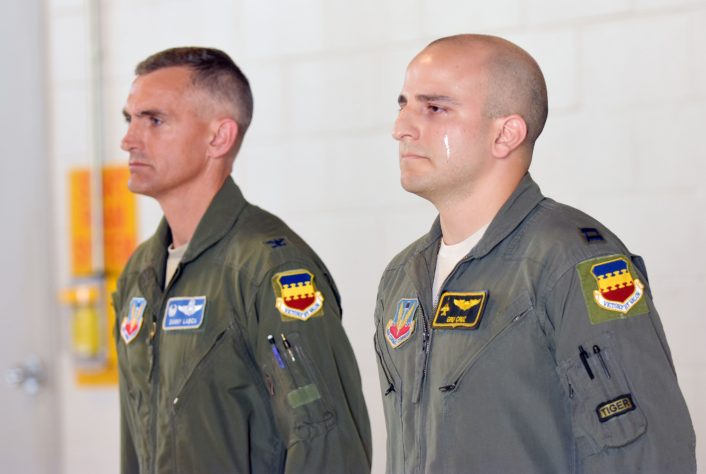
No clear photos of the F-16s’ airstrikes in support of the Rangers on the ground in the darkness of April 26, 2017 exist. No visual, historic record. The action was too chaotic and the conditions too extreme for photos of the F-16s that flew the strikes. Only some night vision targeting video survives. Through a mutual contact in the Air Force, air combat illustrator Rick Herter spoke with Capt. Salvador Cruz, callsign “Viper 62”. Herter wanted to create an accurate visual record of the chaotic mission that somehow depicted the heroism and sacrifice while honoring the memory of Sgt. Josh Rodgers and Sgt. Cameron Thomas.
Aviation artist Rick Herter told TheAviationist.com, “Capt. Cruz remarked to me that even from an altitude of 20,000 feet the volume of tracer fire and RPG directed toward the Rangers was something he’d never seen before. Over the following hours both Vipers expended all their bombs and 20 mm as they laid down fire in an effort to suppress and break the back of the enemy below. Taking numerous casualties and with two soldiers killed, the ground commander had his JTAC call for several strikes ‘danger close’. Both pilots had the added hazard of the high mountains surrounding the valley which limited their ability to get down into the weeds. This made their precision from altitude even more critical while targeting and employing their weapons.”
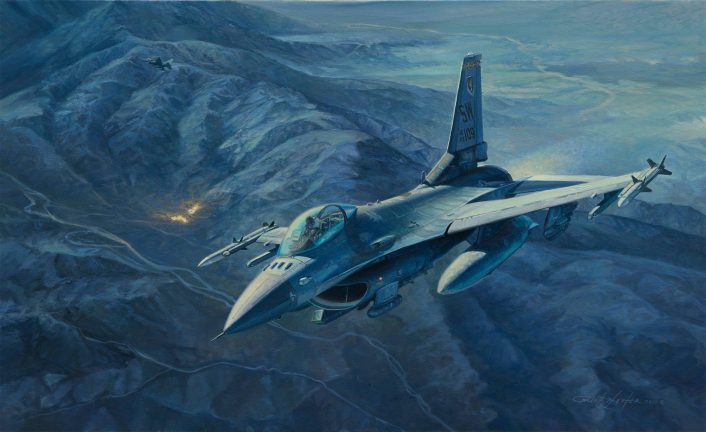
While it may have already been too late to save the two wounded Army Rangers, Sgts. Rodgers and Thomas, the two F-16 pilots, Cruz and Nygard, continued to fly air cover for the medical evacuation and provide protection for the remaining friendly forces still locked in a desperate battle in the darkness on the ground. Herter’s depiction provides a haunting visual record of this desperate close air support mission.
In an epilogue to the tragic loss of Army Rangers Rodgers and Thomas, the father of Josh Rodgers told journalist David Proeber of the Pantagraph File in a December, 2017 interview that, ““We are very heartbroken for his Ranger brothers. There is no animosity on our side. We are completely at peace with what has happened.”
A year later in December 2018, a legislative bill called “H.R. 4326” introduced by U.S. Congressman Darin LaHood passed the United States Senate. In a fitting tribute to one of the many heroes of the desperate battle for Mahmand Valley, the bill proposed to rename the U.S. Post office at 200 West North Street in Normal, Illinois after U.S. Army Sergeant Joshua Rodgers. While a humble gesture, it became just one of many that honor the memory of Sgt. Josh Rodgers and Sgt. Cameron Thomas. This, along with the visual history provided by Rick Herter of the two heroic F-16 pilots, Capts. John J. Nygard and Salvador A. Cruz, have become fitting memorials to two fallen heroes who define the ideals of American character and courage in the face of extreme adversity.

